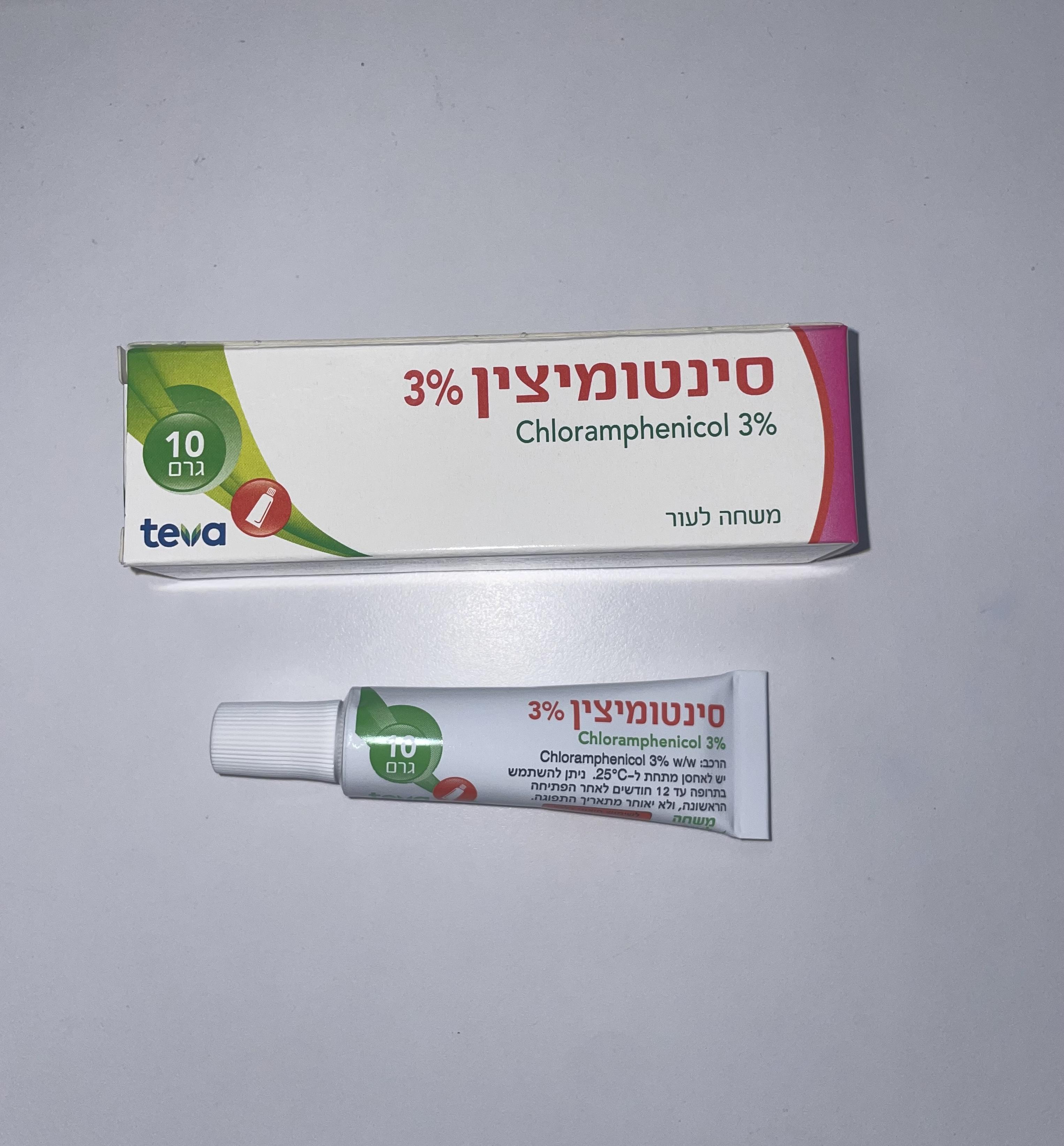Quest for the right Drug

סינטומיצין % 3 SYNTHOMYCINE 3 % (CHLORAMPHENICOL)
תרופה במרשם
תרופה בסל
נרקוטיקה
ציטוטוקסיקה
צורת מתן:
עורי : DERMAL
צורת מינון:
משחה : OINTMENT
עלון לרופא
מינוניםPosology התוויות
Indications תופעות לוואי
Adverse reactions התוויות נגד
Contraindications אינטראקציות
Interactions מינון יתר
Overdose הריון/הנקה
Pregnancy & Lactation אוכלוסיות מיוחדות
Special populations תכונות פרמקולוגיות
Pharmacological properties מידע רוקחי
Pharmaceutical particulars אזהרת שימוש
Special Warning עלון לרופא
Physicians Leaflet
Pharmacological properties : תכונות פרמקולוגיות
Pharmacodynamic Properties
5.1 Pharmacodynamic properties Mechanism of Action Chloramphenicol is a broad spectrum antibiotic which has activity against many types of Gram-positive and Gram-negative bacteria. Chloramphenicol is not effective against fungi, protozoa, and viruses. Chloramphenicol is effective against Gram-positive cocci including staphylococci such as Staph. epidermidis and some strains of Staph. aureus, and streptococci such as Str. pneumoniae, Str. pyogenes, and the viridans streptococci. Gram-negative cocci such as Haemophilus influenzae are usually highly sensitive. Moraxella catarrhalis, a Gram-negative aerobic diplococcus frequently found as acommensal of the upper respiratory tract, is also highly sensitive.
Pharmacokinetic Properties
5.2 Pharmacokinetic properties Any chloramphenicol that is absorbed will be widely distributed in the body tissues and fluids. It is found in cerebrospinal fluid, giving concentrations of about 50% of those existing in the blood even in the absence of inflamed meninges; it diffuses across the placenta into the fetal circulation, into breast milk and into the aqueous and vitreous humour of the eye; it is also secreted in saliva, with the highest concentrations occurring in the kidneys and liver. Up to about 60% in the circulation is bound to plasma protein. Chloramphenicol is excreted mainly in the urine as the glucuronide with small amounts being excreted via the bile and faeces. It has a reported half-life of 1.5 to 4 hours which is increased in patients with liver impairment and neonates to between 24 and 28 hours in the latter. Renal impairment has relatively little effect on the half-life of the active drug, due to its extensive metabolism, but may lead to accumulation of the inactive metabolites. The absorption, metabolism, and excretion of chloramphenicol are subject to considerable interindividual variation, especially in infants and children, making monitoring of plasma concentrations necessary to determine pharmacokinetic in a given patient.

שימוש לפי פנקס קופ''ח כללית 1994
Active against a wide range of gram positive and gram negative organisms
תאריך הכללה מקורי בסל
01/01/1995
הגבלות
תרופה שאושרה לשימוש כללי בקופ'ח
מידע נוסף
עלון מידע לצרכן
15.06.22 - עלון לצרכן אנגלית 15.06.22 - עלון לצרכן עברית 15.06.22 - עלון לצרכן ערבית 08.01.23 - עלון לצרכן עברית 08.03.23 - עלון לצרכן אנגלית 08.03.23 - עלון לצרכן עברית 08.03.23 - עלון לצרכן ערבית 23.08.23 - עלון לצרכן עברית 03.11.23 - עלון לצרכן אנגלית 03.11.23 - עלון לצרכן עברית 03.11.23 - עלון לצרכן ערבית 11.12.23 - עלון לצרכן עברית 11.03.24 - עלון לצרכן אנגלית 11.03.24 - עלון לצרכן עברית 11.03.24 - עלון לצרכן ערבית 10.01.12 - החמרה לעלון 27.09.23 - החמרה לעלון 11.12.23 - החמרה לעלוןלתרופה במאגר משרד הבריאות
סינטומיצין % 3